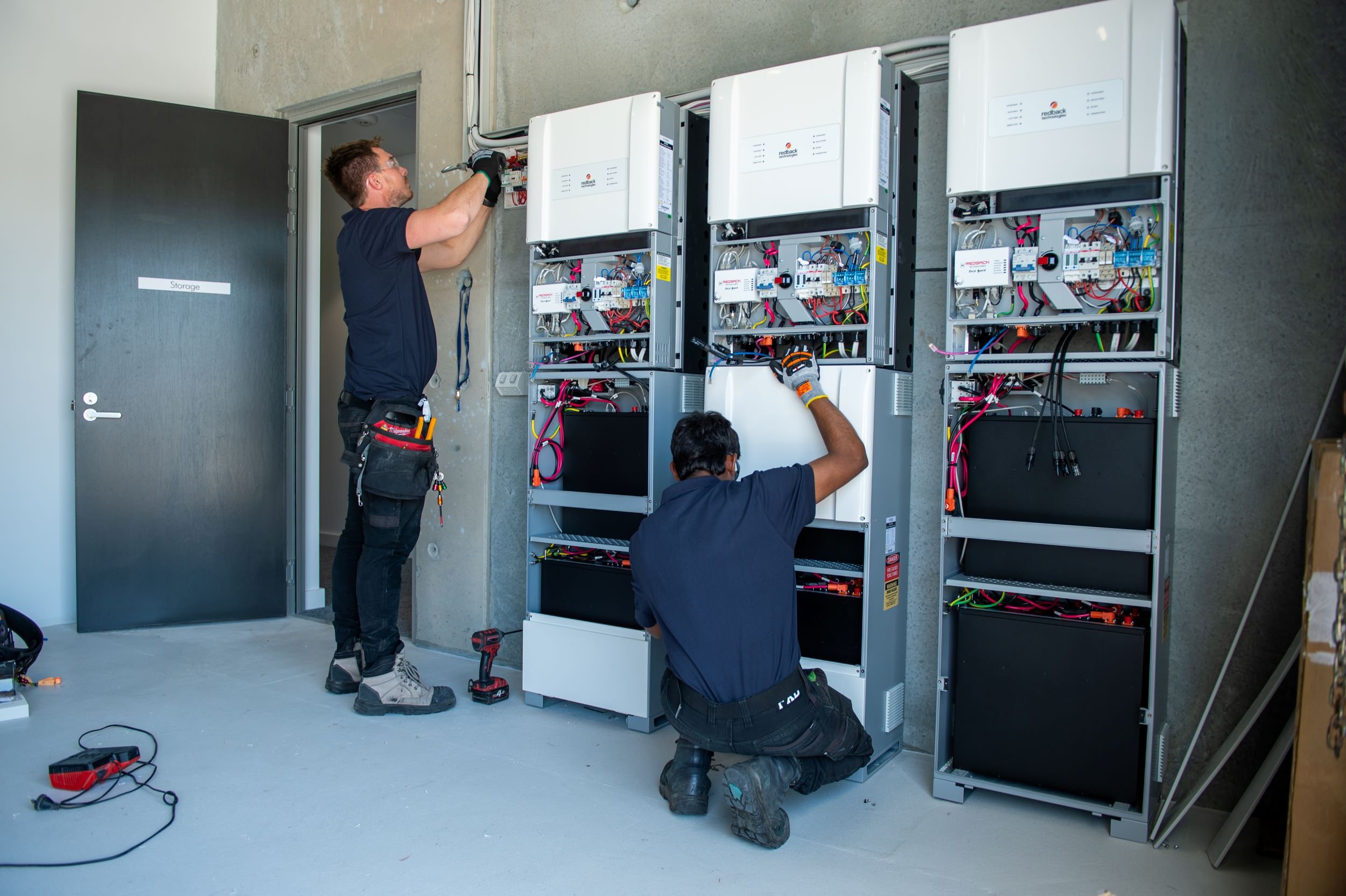In Western Australia, the current Synergy feed-in tariff rate is 10 cents per kilowatt-hour (kWh) exported between 3 pm to 9 pm, and 2 cents per kWh exported at any other time. As Synergy is the primary energy retailer for Western Australia’s main grid network, this is the most common feed-in tariff type statewide. Feed-in tariffs are calculated by multiplying your kWh of exported energy by the feed-in tariff rate. Energy providers set feed-in tariff rates.
What is a solar feed-in tariff?
A solar feed-in tariff is a program that compensates solar system owners for the excess electricity they feed back to the grid. Solar panels provide your home with a clean, affordable electricity source, but there are times when they produce more electricity than your home needs. When the excess goes back to the main grid, your energy retailer provides you with credits. The amount you are credited depends on factors such as time of day, location, and electricity market conditions. Participating in a solar feed-in tariff program aims to offset electricity costs, but tariff rates are subject to change. They won’t always be an effective use of excess energy and are not available at all locations.
In WA, the solar feed-in tariff is listed on power bills as the Distributed Energy Buyback Scheme (DEBS) credit.
What is DEBS?
DEBS stands for Distributed Energy Buyback Scheme. DEBS provides buyback payments to eligible solar users for surplus energy they export back to the grid. DEBS replaced the Renewable Energy Buyback Scheme (REBS) in 2020. The new DEBS allows for energy sources like home battery storage and electric vehicle batteries to also push energy into the grid.
DEBS was introduced by the WA Government to better represent the cost of energy at different times of the day. The scheme encourages solar households to make the most of their solar in the middle of the day and export more during peak energy use times. DEBS is available for existing customers, new solar owners, upgrading households, and those moving to properties with existing solar systems who are connected to the South West Interconnected System (SWIS).
Are DEBS and feed-in tariffs the same thing?
DEBS is a new term used to describe feed-in tariffs. The original Feed-In Tariff scheme (FIT) was available for solar users who installed their systems between 2010 and 2011 and provided buyback rates for 10 years. After the scheme ended, FIT customers automatically received REBS for their exported energy, before REBS was eventually replaced by DEBS. Many solar providers still use the term ‘feed-in tariff’ to refer to the new buyback scheme. Previous FIT customers who did not make changes or upgrades to their solar system automatically moved onto DEBS if their system met the eligibility criteria.
What factors affect the rates of solar feed-in tariffs?
The rates of solar feed-in tariffs in WA are influenced by several key factors. Your electricity retailer plays a significant role in determining the amount you receive for excess electricity. Different retailers offer contrasting tariff rates, so it’s important to consider your choices and opt for a plan that favours you.
Additionally, the time of day when you feed electricity back into the grid impacts tariff rates. Some retailers have time-based variations, with higher payments during peak demand periods. By aligning your energy generation with these peak periods, you increase your tariff rate and maximise your financial benefits.

Government regulations also help shape the rates of solar feed-in tariffs. The policies and incentives implemented by the government impact the overall tariff structure and the financial incentives available to solar system owners. The original FIT scheme was designed to increase the uptake of solar in WA, and it worked! With a feed-in tariff of 47c per kWh, solar owners quickly recouped their investment and made money on collar exports. Solar is now on one in three rooftops and solar exports have caused energy demand to be at an all-time low in the middle of the day. While it sounds like a good thing, it can cause issues for the electricity network in balancing supply and demand.
Market conditions like supply and demand within the energy market also influence the feed-in tariff rates. Changes in electricity prices, the availability of renewable energy sources, and the overall energy landscape impact the tariff rates offered by retailers.
It’s also important to note that homes with larger solar systems may need to implement an export limit, thereby reducing the potential feed-in tariff they receive. If a solar inverter has over 5kWh total capacity, the law requires a set 1.5kW export limit. This is due to the rapid uptake of solar and the pressure this extra energy supply places on the grid. When there is an oversupply of energy and low demand, it creates an imbalance in the grid.
As a current owner or someone considering solar in WA, it is essential to stay informed about these factors and regularly review the tariff rates offered by other retailers if you have the option. Remember to review your options, consider time-based variations, and stay updated on government energy schemes to make the most of your solar system in WA.
How do I calculate my solar feed-in tariff in WA?
To calculate the amount you’ll receive from your energy contributions, multiply your excess electricity by the feed-in tariff rate. Start by checking the tariff rate set by your electricity retailer. In WA, the primary energy retailer is Synergy. Their feed-in tariff rate from July 2023 is set to 10 cents per kWh for exports between 3 pm to 9 pm, and 2 cents per kWh for electricity exported at any other time. After checking your retailer’s rates, determine the amount of extra electricity your solar system feeds back into the grid. You can do this through your solar system’s monitoring equipment or by consulting your solar installer. Multiply the excess by the tariff rate, and that’s how much you will receive.
Knowing how to calculate your feed-in tariff rate allows you to understand your solar system's financial benefits or limitations. It helps gauge the potential savings and the return on your investment. Keep in mind that feed-in tariff rates vary over time, generally on a downward trend, and the financial benefits may not completely offset the cost of the system.
Are solar feed-in tariffs increasing?
Solar feed-in tariffs in WA and across Australia fluctuate over time. In WA, the feed-in tariff rate has remained stable in recent years for the hours between 3 pm to 9 pm. However, we have seen a drop in electricity exports outside those hours from 2.75c per kWh in 2021/22 to 2.5c per kWh in 2022/23, 2.25c per kWh from July 2023 and now 2c per kWh in 2024.
The variations in feed-in tariff rates between states are attributed to energy market dynamics and the overall supply and demand of electricity. Government policies and regulations aim to balance incentives for solar energy generation and the cost burden on electricity retailers. States like New South Wales and Queensland have implemented higher feed-in tariff rates to incentivise renewable energy uptake in homes.
While it’s encouraging to see increasing feed-in rates in other states, it’s crucial for solar system owners in WA and residents to consider their options when it comes to effective return on investment. If you have a solar battery, you may consider joining a virtual power plant (VPP). A VPP connects solar systems and batteries using technology. Being part of a VPP means the operator draws energy stored in your battery and pays you for the input. It’s innovative and often leads to more financial benefits than feed-in tariffs.
How do I apply for a solar feed-in tariff in WA?
To apply for the solar feed-in tariff, you must ensure that you are eligible. This requires an approved solar installation and a connection to the grid. Once your system meets the eligibility criteria, contact your electricity retailer to enquire about their feed-in tariff options. A quality solar provider will do all this for you and provide you with the appropriate paperwork.
If you’ve had solar installed and realise you’re missing out on the feed-in tariff, inform your electricity retailer. They will guide you through the process and provide you with the paperwork or online forms to complete. Be prepared to provide details about your solar system, such as its capacity and installation date.
Different electricity retailers may have varying feed-in tariff rates and terms. Most of WA uses Synergy, but some regional areas are serviced by Horizon Power. Take the time to consider the rate they offer for excess solar energy, any associated fees or charges, and the duration of the feed-in tariff agreement.
After adding a feed-in tariff to your solar system in WA, you’ll start earning credits for the electricity you export back to the grid. This helps offset electricity costs and service charges, and earn you financial benefits. It can even help you achieve $0 bills, especially in the sunnier months (and we all love receiving a bill that’s in credit).

Why you should install a solar battery
With decreasing feed-in tariff rates, installing a solar battery and becoming part of a VPP is a more effective use of excess energy. A battery helps offset energy costs, increase the return on your investment, and contribute to a sustainable energy future. It’s more beneficial for consumers to generate and store excess energy than to send it to the grid for a small feed-in tariff. This way, they can use their own energy at night instead of paying for money from the grid.
Stay informed about the importance of solar feed-in tariffs, batteries, and VPPs and explore how they can enhance your solar journey. Chat with our switched-on friendly team today on 1300 175 426 to unlock the full potential of solar and reap the rewards.
Have a question about solar + battery?


